Visit one of Gaudi’s architectural masterpieces, the famous Pedrera, one of the most visited sites in Barcelona!
La Casa Milà is a unmissable site of the city of Barcelona . Built from 1906 to 1910 on Passeig de Gràcia – one of the largest boulevards in the city linking Plaza de Catalunya to the Gràcia district – it is one of the 1052 monuments listed in UNESCO’s World Heritage. Open to the public since 1987, Casa Milà welcomes more than one million visitors every year.
Here is our guide to visit Casa Mila in Barcelona:
Focus on the history of Casa Milà
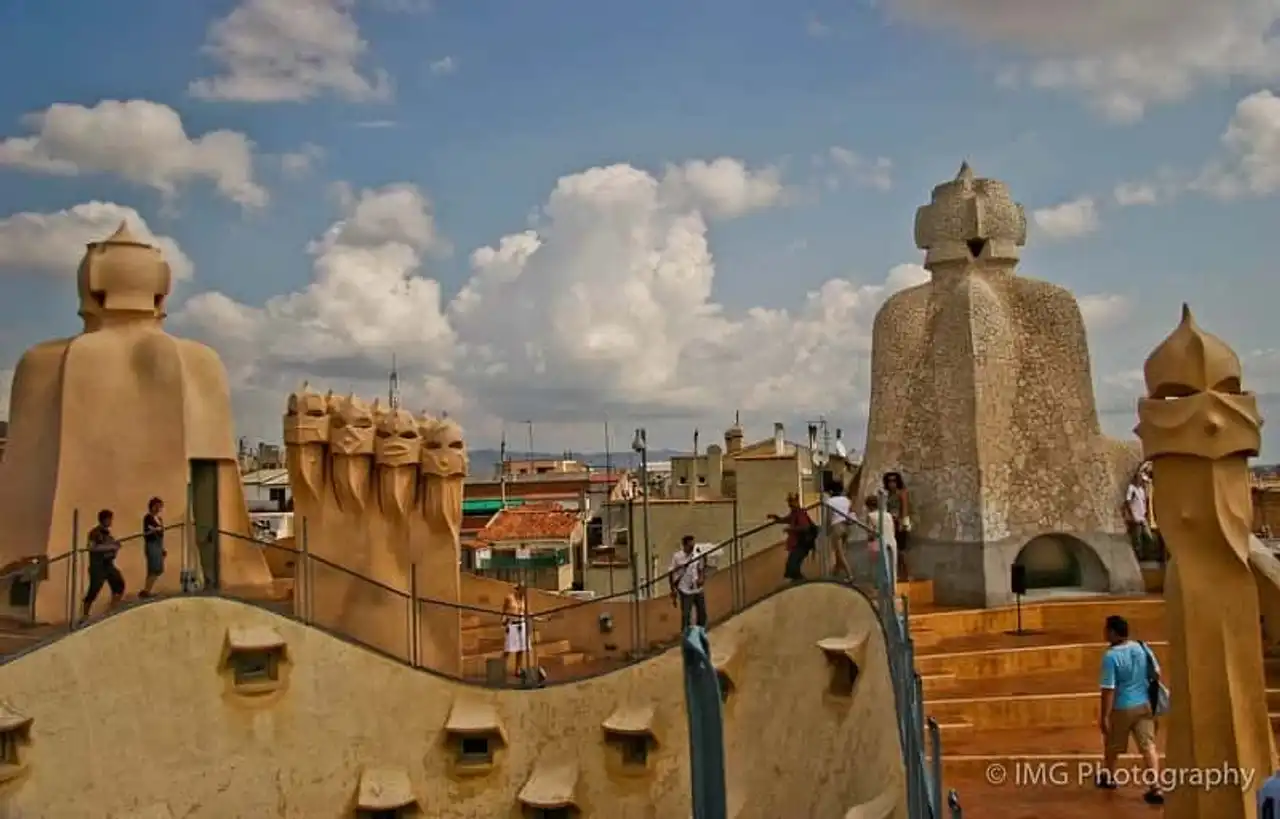
Photo credit: Flickr – Ian Gampon
Classified as one of the major works of Catalan modernist art, Casa Milà was originally designed as a special hotel, built under the aegis of Antoni Gaudí (1852-1926). While the latter worked on the projects of the Sagrada Familia (since 1884), Bellesguard House (1900-1909), Park Güell (1900-1914) and Casa Batlló (1904-1906), a rich Catalan real estate and politician – Pere Milà i Camps – commanded him this great luxury building. The latter wished to reserve the first floor of the eponymous building at its own residence and to dedicate the floors above the rental and its shops.
It was at Casa Batlló, while he knew Josep Batlló himself to be one of the company’s textile companies, that Pere Milà met Antoni Gaudí.
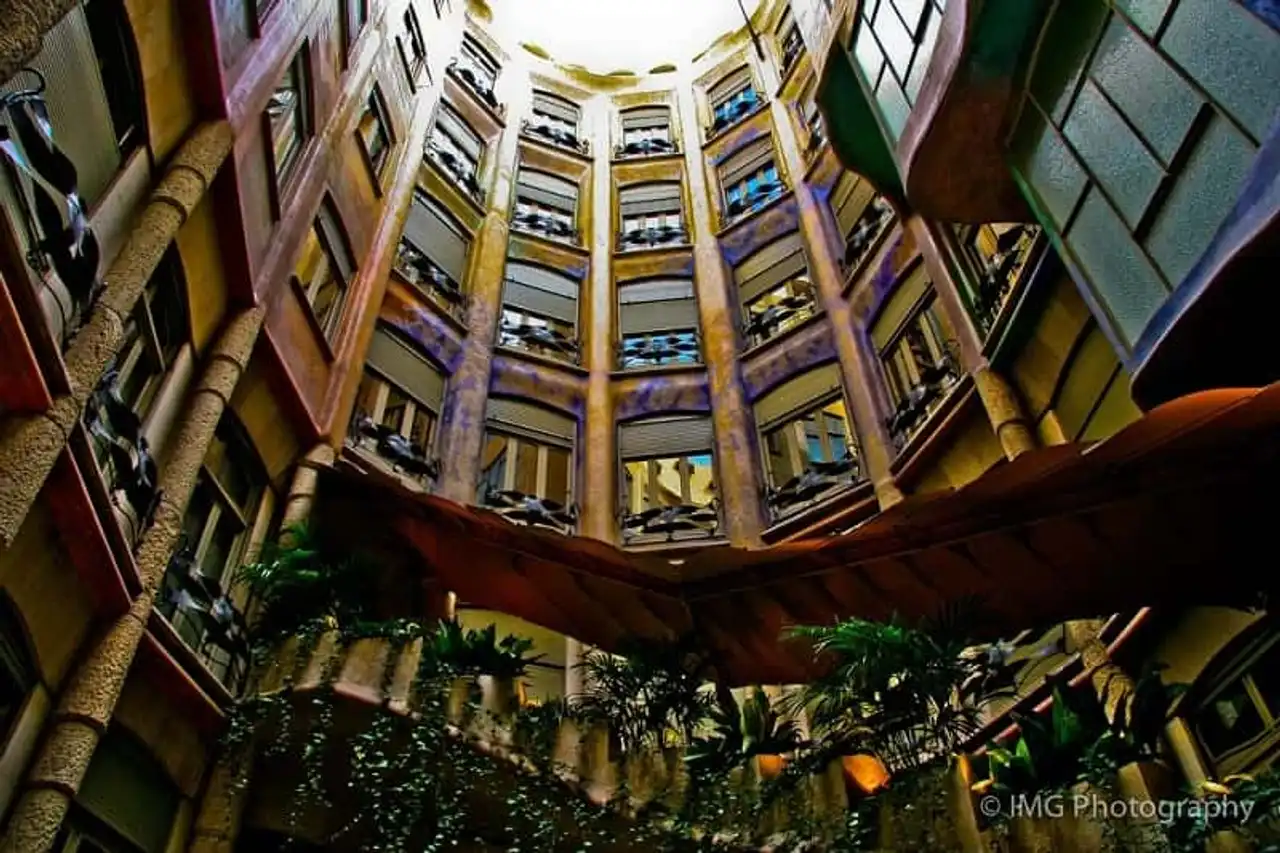
Photo credit: Flickr – Ian Gampon
The first plans were established on February 2, 1906, but as soon as the building permit was deposited, the construction was going to follow a path sown with damaging, meeting the disapproval of the municipal council and the residents of Barcelona. The Gaudí style is unique. Undoubtedly, the eye of his contemporaries had a contrast with the habits of the time, a break with the current order.
For the small anecdote, the first dispute with the town hall broke out in December 1907, when it stopped the construction site on the grounds that a pillar occupied part of the pavement without respecting the alignment of the facades. Too high compared to the original plans, the combles and the terrace of the building were threatened with destruction. Gaudí replied with irony to the threats of the municipal council:
“Tell them that if they want, we will cut the pillar as if it were a cheese, and that on the remaining polished face, we will sculpt a legend that will say: cut, by order of the municipal council and according to an agreement of the plenary of such a date. »
It is the recognition of an artistic character attributed to the building – although too high – that convinced the city not to initiate a process of destruction. The work ended in 1912, when it was authorized to rent. Sold, then sold to various owners, occupied and requisitioned by the Unified Socialist Party during the Spanish Civil War, the building passed into the hands of several private owners before being opened to the public.
Despite several phases of renovation, Gaudí's decoration was lost. In the 1950-1960s, modernist-style apartments – far from Gaudí’s style – were installed, before in the 1990s, the Caixa-Catalunya restored the place in its original style.
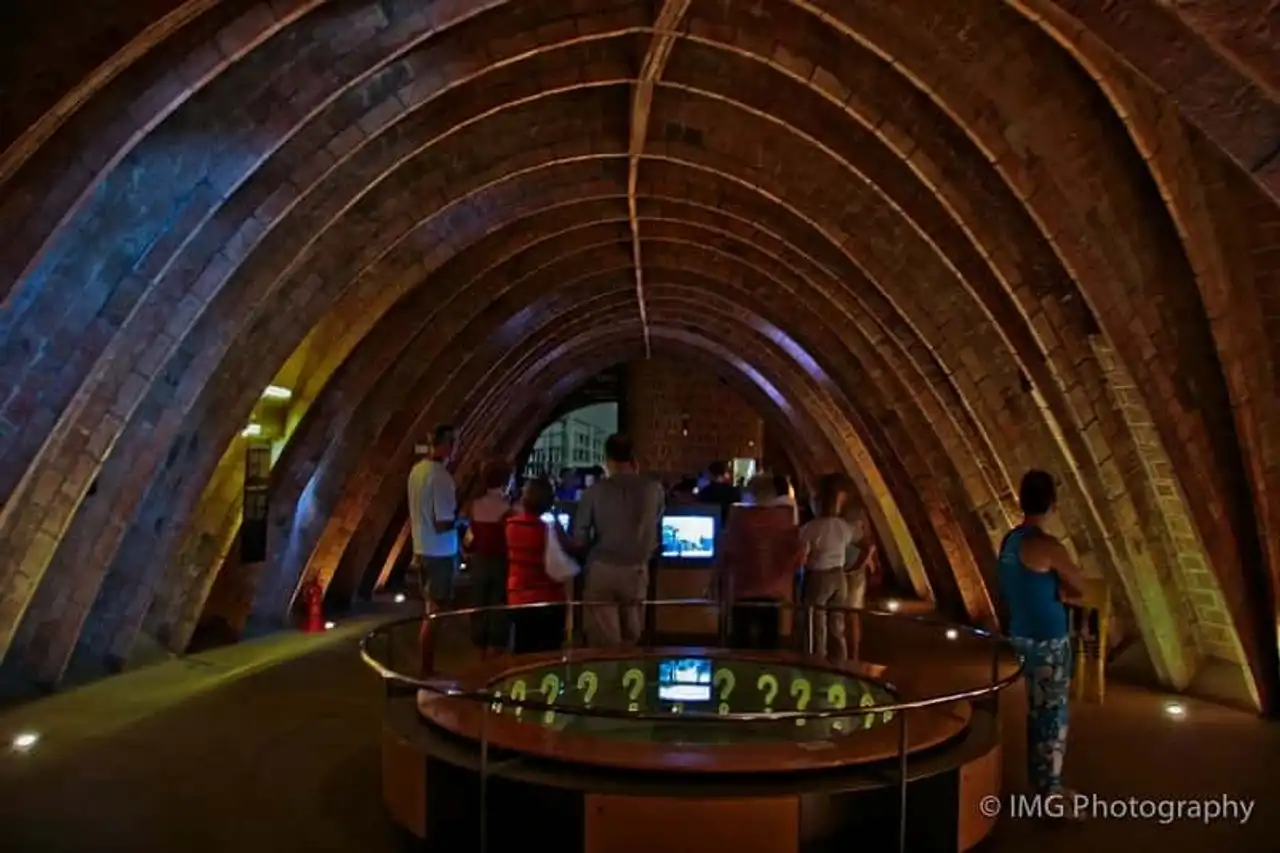
Photo credit: Flickr – Ian Gampon
The visit of Casa Milà, from the ground floor to the fireplaces
Casa Milà is more generally known as the "Pedrera", which means "the quarry of stones" in Spanish. Because at the time, the Barcelonais saw in this building only an astonishment of stones arranged in a mix, without taste and interest.
Visiting Casa Milà is yet to discover a centennial masterpiece of Catalan architecture. The visitor will be struck from the outset by the wavy forms of the facade, the ornaments of the wrought iron balconies and the ferroning grids, which are real technical prowess.
Inside, the visitor discovers the helicoidal ramp of access to the basement for the carrots and the host cars. This visual pilgrimage continues with another specificity: the arrangement of the apartments with no carrying walls. The whole building is indeed supported by metal structures and columns, which allows to make it an evolutionary building, modular to leisure. We will finish visiting Casa Milà by its top part, the roof: the best for the end!
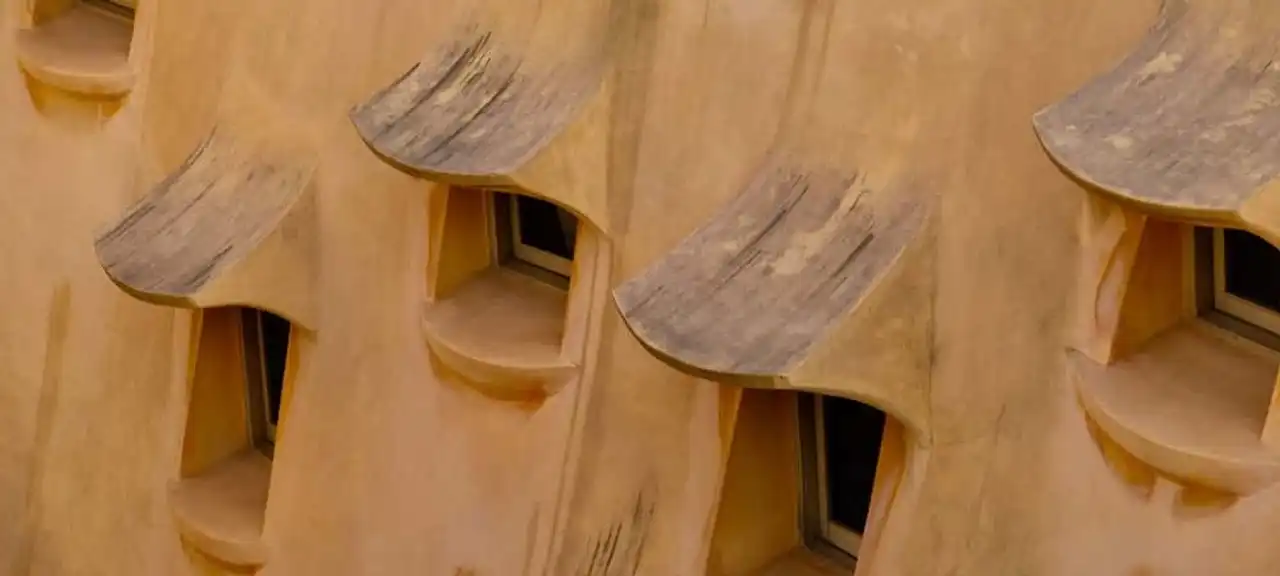
Photo credit: Flickr – John Bugg
In addition to a breathtaking view of the city centre of Barcelona, you can admire the winding forms of the terrace and its many typical sculptures, covered by trencadis. The chimneys of the building would also be an evocation to the corinthian helmets worn by the hoplits (the fantasies under Antiquity).
Book a ticket to visit Casa Milà
To visit Casa Milà, you are advised to book your ticket in advance because queues can be long.
The site is open every day of the week: From 4 January to 2 March: from 9 am to 6:30 pm (last admission: 6 pm) From March 3 to November 5: from 9 am to 8:30 pm (last admission: 8 pm) From 6 November to 24 December: from 9 am to 6:30 pm (last admission: 6 pm) From 26 December to 3 January: from 9 am to 8:30 pm (last admission: 8 pm)
Entry rates:
- Adults (over 12 years old): 22 €
- Children (from 7 to 12 years old): 11 €
- Students: 16,50 €
- More than 65 years old : 16,50 €
- Children (less than 6 years old): Free.
The skip-line ticket to visit Casa Milà is at the same price as the normal entrance, and allows access to the site as if you were a V.I.P. member.
How? You mention your contact details, name, mailing address and email address when paying. Then you receive your ticket by email. And the tower is played!
How do I access Casa Milà?
Take the metro, line 3 or line 5, exit Diagonal.
By car: by the Avinguda Diagonal, then the carrer of Provença.
La Casa Milà is at the crossroads of carrer de Provença and Passeig de Gracia You can't miss her!
Main photo credit: Flickr – Ian Gampon
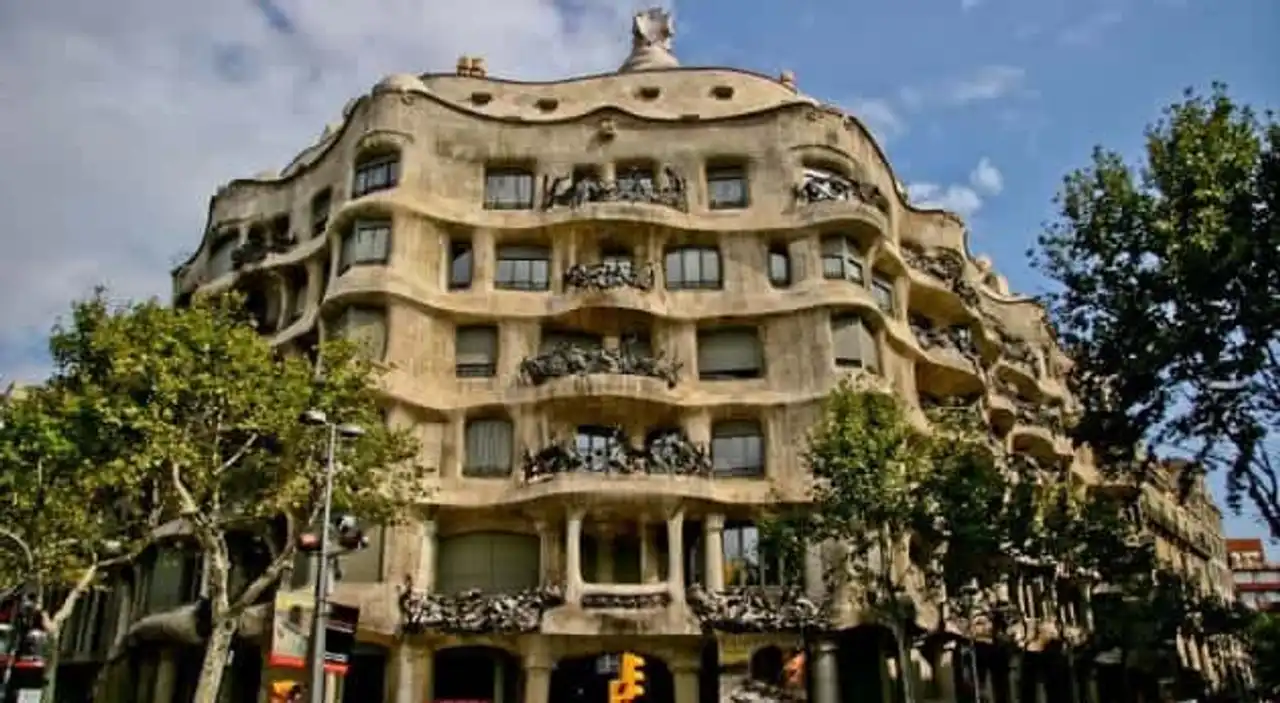





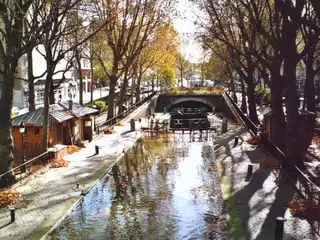
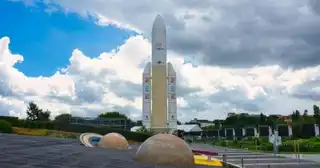
Loading comments ...